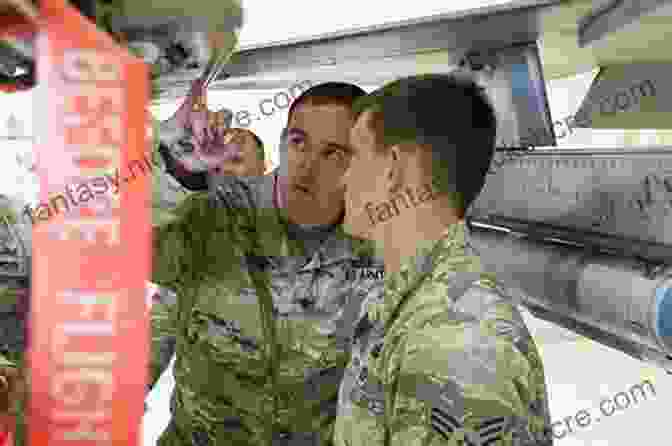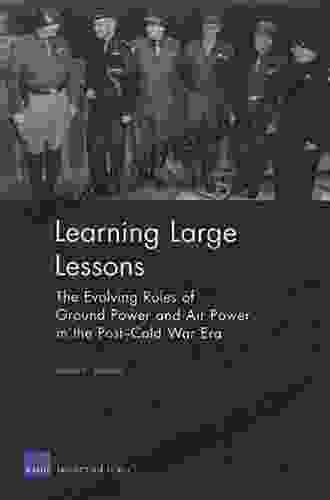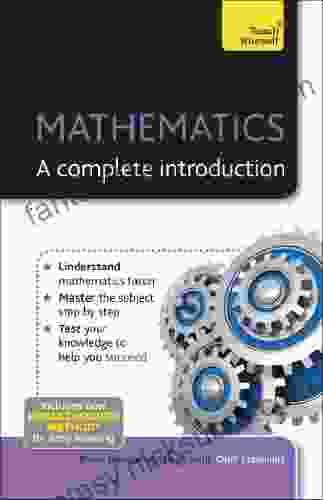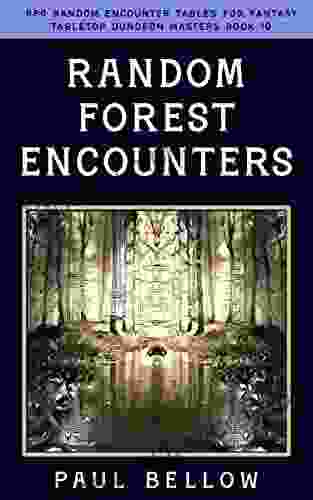The Evolving Roles of Ground Power and Air Power in the Post-Cold War Era: A Comprehensive Exploration


The end of the Cold War marked a significant turning point in global politics and military affairs. The bipolar world order that had defined international relations for decades gave way to a more complex and multipolar system. This new era brought with it a range of new challenges and opportunities for military planners and strategists. One of the most significant changes in the post-Cold War era has been the evolving roles of ground power and air power.
4.4 out of 5
| Language | : | English |
| File size | : | 1074 KB |
| Text-to-Speech | : | Enabled |
| Screen Reader | : | Supported |
| Enhanced typesetting | : | Enabled |
| Print length | : | 265 pages |
| Lending | : | Enabled |
In the past, ground forces were considered the primary means of conducting warfare. Air power was seen as a supporting role, providing close air support, reconnaissance, and transportation. However, the Gulf War of 1991 demonstrated the growing importance of air power in modern warfare. The US-led coalition used air power to paralyze Iraqi ground forces, leading to a quick and decisive victory.
Since then, air power has continued to play a越来越重要 role in military operations. In the 2003 invasion of Iraq, for example, air power was used to destroy Iraqi air defenses, ground forces, and infrastructure. Air power also played a key role in the 2011 NATO intervention in Libya, which helped to overthrow the regime of Muammar Gaddafi.
The growing importance of air power has led to a shift in the balance of power between ground forces and air forces. In the past, ground forces were the dominant force in warfare. However, air forces are now increasingly seen as the primary means of conducting operations. This shift is due to a number of factors, including:
* The development of new technologies, such as stealth aircraft and precision-guided munitions, which have made air power more effective and versatile. * The increasing cost of ground forces, which has made air power a more affordable option. * The growing complexity of modern warfare, which requires a more flexible and agile approach that air power can provide.
The evolving roles of ground power and air power in the post-Cold War era have had a significant impact on the way that wars are fought. Air power is now the dominant force in warfare, and ground forces are increasingly playing a supporting role. This shift is likely to continue in the future, as air power becomes even more effective and versatile.
The Role of Ground Forces in the Post-Cold War Era
Despite the growing importance of air power, ground forces continue to play a vital role in modern warfare. Ground forces are essential for:
* Controlling and holding territory. * Conducting counterinsurgency operations. * Providing security and stability in post-conflict environments.
In the post-Cold War era, ground forces have been deployed in a wide range of operations, including:
* The Gulf War of 1991. * The 2003 invasion of Iraq. * The 2011 NATO intervention in Libya. * The ongoing war in Afghanistan.
In each of these operations, ground forces played a key role in achieving the mission objectives. In the Gulf War, for example, ground forces were used to liberate Kuwait and destroy the Iraqi army. In the 2003 invasion of Iraq, ground forces were used to topple the regime of Saddam Hussein and establish a new Iraqi government. In the 2011 NATO intervention in Libya, ground forces were used to help secure the country after the fall of Muammar Gaddafi.
The role of ground forces in the post-Cold War era has changed in several important ways. First, ground forces are now more likely to be deployed in peacekeeping and stabilization operations. Second, ground forces are increasingly being used to conduct counterinsurgency operations. Third, ground forces are now more likely to be deployed in combined operations with air forces.
These changes reflect the evolving nature of warfare in the post-Cold War era. Ground forces are no longer the primary means of conducting warfare. However, they continue to play a vital role in supporting air power and achieving mission objectives.
The Role of Air Power in the Post-Cold War Era
As discussed above, air power has become increasingly important in the post-Cold War era. Air power is now the dominant force in warfare, and ground forces are increasingly playing a supporting role. This shift is due to a number of factors, including:
* The development of new technologies, such as stealth aircraft and precision-guided munitions, which have made air power more effective and versatile. * The increasing cost of ground forces, which has made air power a more affordable option. * The growing complexity of modern warfare, which requires a more flexible and agile approach that air power can provide.
Air power is used in a wide range of military operations, including:
* Air superiority operations. * Close air support. * Reconnaissance. * Transportation. * Electronic warfare.
In the post-Cold War era, air power has been used in a number of major military operations, including:
* The Gulf War of 1991. * The 2003 invasion of Iraq. * The 2011 NATO intervention in Libya. * The ongoing war in Afghanistan.
In each of these operations, air power played a key role in achieving the mission objectives. In the Gulf War, for example, air power was used to paralyze Iraqi ground forces, leading to a quick and decisive victory. In the 2003 invasion of Iraq, air power was used to destroy Iraqi air defenses, ground forces, and infrastructure. In the 2011 NATO intervention in Libya, air power was used to help secure the country after the fall of Muammar Gaddafi.
The role of air power in the post-Cold War era has changed in several important ways. First, air power is now more likely to be used in preemptive strikes. Second, air power is increasingly being used to conduct surgical strikes against high-value targets. Third, air power is now more likely to be used in combined operations with ground forces.
These changes reflect the evolving nature of warfare in the post-Cold War era. Air power is no longer a supporting role for ground forces. It is now the dominant force in warfare, and ground forces are increasingly playing a supporting role.
The Future of Ground Power and Air Power
The future of ground power and air power is uncertain. However, there are a number of trends that are likely to shape the future of warfare. These trends include:
* The continued development of new technologies, such as unmanned aerial vehicles (UAVs) and directed-energy weapons. * The increasing convergence of ground power and air power. * The growing importance of cyberwarfare.
These trends are likely to lead to a more complex and challenging security environment in the future. Ground forces and air forces will need to adapt to these changes in order to remain effective.
One of the most important trends in the future of warfare is the continued development of new technologies. These technologies are likely to have a significant impact on the way that wars are fought. For example, UAVs are becoming increasingly sophisticated and are being used for a wider range of missions. Directed-energy weapons are also being developed, and these weapons could revolutionize warfare by providing a new way to destroy enemy targets.
Another important trend in the future of warfare is the increasing convergence of ground power and air power. This convergence is being driven by the development of new technologies, such as UAVs, which can operate in both ground and air environments. The convergence of ground power and air power is likely to lead to new and innovative ways of conducting warfare.
Finally, the growing importance of cyberwarfare is another trend that is likely to shape the future of warfare. Cyberwarfare is the use of computer networks to attack an enemy's infrastructure or military systems. Cyberwarfare can be used to disrupt enemy communications, disable enemy weapons systems, or even steal sensitive information. The growing importance of cyberwarfare is likely to lead to a new era of warfare in which both ground forces and air forces will need to be prepared to operate in a cyber environment.
The evolving roles of ground power and air power in the post-Cold War era have had a significant impact on the way that wars are fought. Air power is now the dominant force in warfare, and ground forces are increasingly playing a supporting role. This shift is likely to continue in the future, as air power becomes even more effective and versatile.
The future of warfare is uncertain. However, there are a number of trends that are likely to shape the future of warfare. These trends include
4.4 out of 5
| Language | : | English |
| File size | : | 1074 KB |
| Text-to-Speech | : | Enabled |
| Screen Reader | : | Supported |
| Enhanced typesetting | : | Enabled |
| Print length | : | 265 pages |
| Lending | : | Enabled |
Do you want to contribute by writing guest posts on this blog?
Please contact us and send us a resume of previous articles that you have written.
 Fiction
Fiction Non Fiction
Non Fiction Romance
Romance Mystery
Mystery Thriller
Thriller SciFi
SciFi Fantasy
Fantasy Horror
Horror Biography
Biography Selfhelp
Selfhelp Business
Business History
History Classics
Classics Poetry
Poetry Childrens
Childrens Young Adult
Young Adult Educational
Educational Cooking
Cooking Travel
Travel Lifestyle
Lifestyle Spirituality
Spirituality Health
Health Fitness
Fitness Technology
Technology Science
Science Arts
Arts Crafts
Crafts DIY
DIY Gardening
Gardening Petcare
Petcare Richard W Fisher
Richard W Fisher Matthew Bowling
Matthew Bowling Jeff Wheeler
Jeff Wheeler Jackie Brown
Jackie Brown Elizabeth Thompson
Elizabeth Thompson Linda Bauer
Linda Bauer Martyn Denscombe
Martyn Denscombe Robert F Burgess
Robert F Burgess Editors Of Sports Illustrated
Editors Of Sports Illustrated Marie Max House
Marie Max House Katie Singer
Katie Singer Jared Derksen
Jared Derksen Michael Hartman
Michael Hartman Karen Armstrong
Karen Armstrong Helen Irlen
Helen Irlen Diondre Mompoint
Diondre Mompoint Jennifer Shannon
Jennifer Shannon Pedro Urvi
Pedro Urvi Doug Fletcher
Doug Fletcher Carlos Torres
Carlos Torres Meagan Trayler
Meagan Trayler Evan Purcell
Evan Purcell Virginia Smith Harvey
Virginia Smith Harvey Shantel Silbernagel
Shantel Silbernagel Edwin H Friedman
Edwin H Friedman Charlie Craven
Charlie Craven Susan Shelby Torrance
Susan Shelby Torrance Ernest Raymond
Ernest Raymond Brad States
Brad States Lynette Rushton
Lynette Rushton Fiona Danks
Fiona Danks Shannon Sovndal
Shannon Sovndal Dashka Slater
Dashka Slater Richard B Pelzer
Richard B Pelzer Jacques Devore
Jacques Devore Stacie Mahoe
Stacie Mahoe Ofer Gal
Ofer Gal Cheryl Marlene
Cheryl Marlene Marc Bona
Marc Bona Phoebe Bailey
Phoebe Bailey Jarrett Dapier
Jarrett Dapier John Brierley
John Brierley Silvia Dunn
Silvia Dunn Janice Selekman
Janice Selekman Chris Sims
Chris Sims Special Tactics
Special Tactics Rob Casey
Rob Casey Holger Schutkowski
Holger Schutkowski Pete Spencer
Pete Spencer Bill Moeller
Bill Moeller Adiba Jaigirdar
Adiba Jaigirdar Richard Post
Richard Post Simon Buxton
Simon Buxton Clement Salvadori
Clement Salvadori Melissa Abramovitz
Melissa Abramovitz David E Johnson
David E Johnson Diana Wynne Jones
Diana Wynne Jones Bev Pettersen
Bev Pettersen General
General Cj Andersen
Cj Andersen Jennifer Kolari
Jennifer Kolari Claire Russell
Claire Russell Sara Low
Sara Low Jim Greenwood
Jim Greenwood Marion Zimmer Bradley
Marion Zimmer Bradley Kristin N Spencer
Kristin N Spencer Stanislas Dehaene
Stanislas Dehaene Henry Charles Lea
Henry Charles Lea Ted Kaczynski
Ted Kaczynski Rod Powers
Rod Powers Holly Jackson
Holly Jackson Kevin Marx
Kevin Marx Brian Crist
Brian Crist The Uk Mathematics Trust
The Uk Mathematics Trust Genius Reads
Genius Reads Jedd K Parkinson
Jedd K Parkinson Ross Edgley
Ross Edgley Bill Gutman
Bill Gutman Sheridan Anderson
Sheridan Anderson Stephanie Manley
Stephanie Manley Herbert Dorsey
Herbert Dorsey Tony Guerra
Tony Guerra Herschel Knapp
Herschel Knapp Jen Castleberry
Jen Castleberry Rick Reilly
Rick Reilly Gavin Weightman
Gavin Weightman Robert Greene
Robert Greene Thomas Bailey
Thomas Bailey Yau Ming Ng Thompson
Yau Ming Ng Thompson Elsevier
Elsevier James Dashner
James Dashner Bob Duff
Bob Duff Elizabeth King
Elizabeth King Cherie Dimaline
Cherie Dimaline Enzo Tonti
Enzo Tonti Betsy Herman
Betsy Herman Maggi Savin Baden
Maggi Savin Baden Justin Lichter
Justin Lichter Conway X Bowman
Conway X Bowman John H Holland
John H Holland Peter Julius Sloan
Peter Julius Sloan Elizabeth A Stanley
Elizabeth A Stanley Daniel J Velleman
Daniel J Velleman Leland Chant
Leland Chant Tina Cassidy
Tina Cassidy Frank S Ring
Frank S Ring George Mahood
George Mahood Rocky Mcelveen
Rocky Mcelveen Jane Nelsen
Jane Nelsen Dr Julissa Hernandez Nd Cnhp
Dr Julissa Hernandez Nd Cnhp Leah Day
Leah Day Marilee Lebon
Marilee Lebon Ellen Schuthof Lesmeister
Ellen Schuthof Lesmeister Kevin C Kelleher Md Md
Kevin C Kelleher Md Md Mike Veny
Mike Veny Farah Heron
Farah Heron Elliot Kay
Elliot Kay Luciano Floridi
Luciano Floridi Curt Sampson
Curt Sampson Marty Gitlin
Marty Gitlin Robert Axelrod
Robert Axelrod Shelby Mahurin
Shelby Mahurin Jake Jacobson
Jake Jacobson Tim Weston
Tim Weston Joshua Foer
Joshua Foer Dylan Tomine
Dylan Tomine Sang H Kim
Sang H Kim William F Keegan
William F Keegan Michael W Eysenck
Michael W Eysenck Aylette Jenness
Aylette Jenness Frank Giampaolo
Frank Giampaolo Bill Patton
Bill Patton D C Haenlien
D C Haenlien Dinah Bucholz
Dinah Bucholz Kasun Indrasiri
Kasun Indrasiri Mary Griffith
Mary Griffith Jane Bottomley
Jane Bottomley Matt Parker
Matt Parker J D Gauchat
J D Gauchat R E Skibiski
R E Skibiski Ron Elbe
Ron Elbe Peter Jackson
Peter Jackson Yossi Ghinsberg
Yossi Ghinsberg Robert Bruce Thompson
Robert Bruce Thompson Charles Duhigg
Charles Duhigg P J E Peebles
P J E Peebles Helen Clarke
Helen Clarke Ross Bonander
Ross Bonander John C Norcross
John C Norcross Anya Kamenetz
Anya Kamenetz James Alexander Currie
James Alexander Currie Richard Holmes
Richard Holmes Scarlett Curtis
Scarlett Curtis David Nirenberg
David Nirenberg Marisa Imon
Marisa Imon Sarah Zettel
Sarah Zettel Donncha Hanna
Donncha Hanna G William Barnard
G William Barnard Shawn Levy
Shawn Levy Mike Westerfield
Mike Westerfield Alan Lawrence Sitomer
Alan Lawrence Sitomer Suzannah Rowntree
Suzannah Rowntree Steve Biddulph
Steve Biddulph Lisa Dorfman
Lisa Dorfman Martin Davies
Martin Davies Colin Thubron
Colin Thubron Jamie Aten
Jamie Aten Zane Grey
Zane Grey Tony Ortega
Tony Ortega Erin Mcrae
Erin Mcrae Paul Brummell
Paul Brummell Dave Pine
Dave Pine Gary Player
Gary Player Hugh Neill
Hugh Neill Bryan Irwin
Bryan Irwin Lucas Bessire
Lucas Bessire Carson Sievert
Carson Sievert Ingrid Chalufour
Ingrid Chalufour Bjorn Kiggen
Bjorn Kiggen Max Help Workbooks
Max Help Workbooks Dick Edie
Dick Edie Lee Gutkind
Lee Gutkind Rick Steves
Rick Steves Thad Beery
Thad Beery Melissa Layne
Melissa Layne Curvebreakers
Curvebreakers Mark Lehner
Mark Lehner Gwendoline Smith
Gwendoline Smith Joshua Becker
Joshua Becker Blaine Bartel
Blaine Bartel Daniele Benedettelli
Daniele Benedettelli Nrup Parikh
Nrup Parikh Bill Hammack
Bill Hammack Morgan Oostra
Morgan Oostra David Price
David Price Larry Baush
Larry Baush Zecharia Sitchin
Zecharia Sitchin Bob Duchesne
Bob Duchesne Holly Donahue Singh
Holly Donahue Singh Michael J Tougias
Michael J Tougias Christian Smith
Christian Smith Hayley Mitchell Haugen
Hayley Mitchell Haugen Joseph Campbell
Joseph Campbell Bill Schneider
Bill Schneider Dan Blanchard
Dan Blanchard Marcus Brotherton
Marcus Brotherton Charlotte E English
Charlotte E English Victoria Johnson
Victoria Johnson Zoe Hana Mikuta
Zoe Hana Mikuta Paula Yoo
Paula Yoo C D Holmes Miller
C D Holmes Miller Valeria Ray
Valeria Ray Ramona Finn
Ramona Finn Jonathan Crichton
Jonathan Crichton Kindle Edition
Kindle Edition Irene Mceachen
Irene Mceachen Tiffany Loggins Psyd
Tiffany Loggins Psyd Joseph Edminister
Joseph Edminister Karen Palacios Jansen
Karen Palacios Jansen Doug Scott
Doug Scott Bill Nowlin
Bill Nowlin Fred H Croom
Fred H Croom Carolyn Schulz
Carolyn Schulz Colleen Graves
Colleen Graves Claudia Mazzucco
Claudia Mazzucco Ginger Sinsabaugh
Ginger Sinsabaugh Jessica Wiebe
Jessica Wiebe Zavonda Vinson Parrish
Zavonda Vinson Parrish Michael Matthews
Michael Matthews Rachael Scdoris
Rachael Scdoris Editors Of Garden And Gun
Editors Of Garden And Gun Matt Doeden
Matt Doeden Marsha Vanwynsberghe
Marsha Vanwynsberghe Brandon Sanderson
Brandon Sanderson Bryan Mann
Bryan Mann Mosby
Mosby Craig Chappelow
Craig Chappelow Sandra Berenbaum
Sandra Berenbaum Chris Ferrie
Chris Ferrie John Mccollister
John Mccollister Erin Mckittrick
Erin Mckittrick Max Lugavere
Max Lugavere Tom Humphrey
Tom Humphrey Ezekiel Eversand
Ezekiel Eversand Callum Roberts
Callum Roberts Michael Sullivan
Michael Sullivan Rabbi Jason Sobel
Rabbi Jason Sobel Jackie Bolen
Jackie Bolen Pat Cohen
Pat Cohen Ian Wilson
Ian Wilson Geraldine Van Bueren
Geraldine Van Bueren Pat Drake
Pat Drake Charles Goodwill
Charles Goodwill Bill Bennett
Bill Bennett Steven M Levy
Steven M Levy Styrling Strother
Styrling Strother Brienne Murk
Brienne Murk Wanza Leftwich
Wanza Leftwich Clifford A Pickover
Clifford A Pickover Hilary Nangle
Hilary Nangle Tara Bianca
Tara Bianca Kate Marchant
Kate Marchant Felicity Aston
Felicity Aston Robert A Pelcovits
Robert A Pelcovits Paris Williams
Paris Williams Olivia Gordon
Olivia GordonMax Youngquist
 Douglas W Ota
Douglas W Ota Chris Sajnog
Chris Sajnog Gary Dean Quesenberry
Gary Dean Quesenberry Billy Griffiths
Billy Griffiths Carlos Castaneda
Carlos Castaneda Kat Kruger
Kat Kruger Ken Venturi
Ken Venturi Eric A Weiss Md
Eric A Weiss Md Jessica Denay
Jessica Denay Sandra Davidson
Sandra Davidson Sharmila Desai
Sharmila Desai Sandi Mann
Sandi Mann Kate Darling
Kate Darling Blake Sebring
Blake Sebring Rob Steger
Rob Steger Bill Gladstone
Bill Gladstone Al Walsh
Al Walsh Davi Kopenawa
Davi Kopenawa Mark Solms
Mark Solms J Douglas Faires
J Douglas Faires Rachna Chhachhi
Rachna Chhachhi Marie Viljoen
Marie Viljoen Dan Murphy
Dan Murphy Michael Tlanusta Garrett
Michael Tlanusta Garrett Deborah J Rumsey
Deborah J Rumsey Dina Nayeri
Dina Nayeri Jon M Sweeney
Jon M Sweeney Dan Hamilton
Dan Hamilton Jacqueline B Persons
Jacqueline B Persons Bill Boyum
Bill Boyum Henry M Cowles
Henry M Cowles Sanford Holst
Sanford Holst James Patterson
James Patterson J Robert King
J Robert King Henry Nicholls
Henry Nicholls Greg Witt
Greg Witt Sabaa Tahir
Sabaa Tahir Neil D Jespersen
Neil D Jespersen Wendy Doniger
Wendy Doniger Zach Schonbrun
Zach Schonbrun Megan Don
Megan Don Izzy Judd
Izzy Judd John Kettle
John Kettle Frederica Relly
Frederica Relly Sophia Freeman
Sophia Freeman Joy Hakim
Joy Hakim Supersummary
Supersummary Chris Napier
Chris Napier Gail Fay
Gail Fay Kiera Cass
Kiera Cass Richard Rohr
Richard Rohr Jamie Dumas
Jamie Dumas Kevin Sverduk
Kevin Sverduk Peter Aitken
Peter Aitken David Benjamin
David Benjamin Gary Kamiya
Gary Kamiya Dawn Huebner
Dawn Huebner Phil Robertson
Phil Robertson Rebekah Nathan
Rebekah Nathan Issai Chozanshi
Issai Chozanshi Rachel Burgess
Rachel Burgess Sara Dyer
Sara Dyer Emma Cannon
Emma Cannon Sue Enquist
Sue Enquist Bill Karwin
Bill Karwin Bex Gunn
Bex Gunn Mindy Mcginnis
Mindy Mcginnis Yakima Canutt
Yakima Canutt Bill Streever
Bill Streever Nancy Romita
Nancy Romita James W Finegan
James W Finegan Karyn D Hall
Karyn D Hall Sue L Hamilton
Sue L Hamilton Jelena Bogdanovic
Jelena Bogdanovic Mark Booth
Mark Booth Louis Sachar
Louis Sachar H P Lovecraft
H P Lovecraft Margo Armstrong
Margo Armstrong John Mccannon
John Mccannon Scott Wilson
Scott Wilson Oscar Nilson
Oscar Nilson Manly P Hall
Manly P Hall James P Allen
James P Allen John Muir Laws
John Muir Laws Robert Byron
Robert Byron Patrick Mcginty
Patrick Mcginty Russ Harris
Russ Harris Dan Garner
Dan Garner Tiffany Bergin
Tiffany Bergin Rupert Spira
Rupert Spira Kristopher Martel
Kristopher Martel T Edward Nickens
T Edward Nickens Mark Vanhoenacker
Mark Vanhoenacker David E Stuart
David E Stuart Harlan Coben
Harlan Coben Paul Francis
Paul Francis Jon Loeliger
Jon Loeliger Bode Miller
Bode Miller Dean Keith Simonton
Dean Keith Simonton Joie Jager Hyman
Joie Jager Hyman Ryan Johnston
Ryan Johnston Vanessa Lapointe
Vanessa Lapointe Linda D Dahl
Linda D Dahl Susan M Orsillo
Susan M Orsillo Michael D Alessio
Michael D Alessio Wendy Hinman
Wendy Hinman Jeremy Paxman
Jeremy Paxman S W Wilcox
S W Wilcox Thomas Cleary
Thomas Cleary J T Williams
J T Williams Stephen L Morgan
Stephen L Morgan Simon Pridmore
Simon Pridmore Bob Glover
Bob Glover Deborah Blum
Deborah Blum Jeffrey Lindsey
Jeffrey Lindsey Chris Fischer
Chris Fischer Erin Beaty
Erin Beaty Kasey Edwards
Kasey Edwards Paul Halpern
Paul Halpern Joan Roughgarden
Joan Roughgarden Vernon G Zunker
Vernon G Zunker Mike Gibson
Mike Gibson Charles A Rhodus
Charles A Rhodus Paul Levy
Paul Levy Simon Baron Cohen
Simon Baron Cohen Michael Lempert
Michael Lempert Megan Mcgrory Massaro
Megan Mcgrory Massaro Michael Volkmar
Michael Volkmar Jacques Steinberg
Jacques Steinberg Andrea Cremer
Andrea Cremer Steven Hassan
Steven Hassan Jamie Foxx
Jamie Foxx Dan Yaccarino
Dan Yaccarino Manoj Sharma
Manoj Sharma David Joyce
David Joyce Krista Tippett
Krista Tippett Kenny Dill
Kenny Dill Laura Nowlin
Laura Nowlin Emma Griffin
Emma Griffin Gianna Sobol
Gianna Sobol Vukota Boljanovic
Vukota Boljanovic George C Thomas
George C Thomas Jitendra Chouksey
Jitendra Chouksey Joann Cianciulli
Joann Cianciulli Michael J Epstein
Michael J Epstein Billy Martin
Billy Martin Charles Simpson
Charles Simpson Rough Guides
Rough Guides Elizabeth Winthrop
Elizabeth Winthrop Jakub Marian
Jakub Marian Steve Schwartz
Steve Schwartz Ta Nehisi Coates
Ta Nehisi Coates David Halberstam
David Halberstam Jessica Taylor
Jessica Taylor Terry Pratchett
Terry Pratchett Tom Dodd
Tom Dodd Mark Young
Mark Young Isabel Fonseca
Isabel Fonseca Zigzag English
Zigzag English Paul Bellow
Paul Bellow Eric H Cline
Eric H Cline Dr Nancy L Nolan
Dr Nancy L Nolan Stephen Arterburn
Stephen Arterburn Nicole R Taylor
Nicole R Taylor Phil Genova
Phil Genova Joe Byers
Joe Byers Jojo Siwa
Jojo Siwa James R Payne
James R Payne Sharon Bergen
Sharon Bergen Christopher Banecks
Christopher Banecks Gary Nicol
Gary Nicol Fodor S Travel Guides
Fodor S Travel Guides T Whitmore
T Whitmore Sam Harris
Sam Harris Ian Tuhovsky
Ian Tuhovsky Laurie Rubin
Laurie Rubin Bharath Ramsundar
Bharath Ramsundar Gregg Jackson
Gregg Jackson Sheila Mackechnie Murtha
Sheila Mackechnie Murtha Carl B Tolman
Carl B Tolman Laurence Price
Laurence Price Dawn Hadley
Dawn Hadley Beck Weathers
Beck Weathers Bill Miller
Bill MillerR E S
 Heather Long
Heather Long Freddie Fernandez
Freddie Fernandez Kent Hrbek
Kent Hrbek Stephan A Hoeller
Stephan A Hoeller Robert P Beebe
Robert P Beebe Mercedes Lackey
Mercedes Lackey
Light bulbAdvertise smarter! Our strategic ad space ensures maximum exposure. Reserve your spot today!

 Brody PowellPaleoamerican Odyssey: Peopling of the Americas Publications | An Exhaustive...
Brody PowellPaleoamerican Odyssey: Peopling of the Americas Publications | An Exhaustive...
 Kendall WardAn Inquiry Into the Mystery and Art of Living: Exploring the Profoundness of...
Kendall WardAn Inquiry Into the Mystery and Art of Living: Exploring the Profoundness of... Jayson PowellFollow ·5.3k
Jayson PowellFollow ·5.3k Damon HayesFollow ·14.2k
Damon HayesFollow ·14.2k Joe SimmonsFollow ·8k
Joe SimmonsFollow ·8k George OrwellFollow ·10k
George OrwellFollow ·10k Fabian MitchellFollow ·9.9k
Fabian MitchellFollow ·9.9k Nathaniel HawthorneFollow ·7.8k
Nathaniel HawthorneFollow ·7.8k Morris CarterFollow ·13.6k
Morris CarterFollow ·13.6k Gabriel HayesFollow ·8.1k
Gabriel HayesFollow ·8.1k

 Sammy Powell
Sammy PowellBalancing Your Hormones Naturally: Regaining Fertility...
Hormones play a vital role in our...

 Kendall Ward
Kendall WardThe Other Baby Book: A Comprehensive Guide to Baby's...
The Other Baby...

 Kenneth Parker
Kenneth ParkerA Comprehensive Guide to Yoga Sadhana for Mothers:...
Motherhood is a...

 Neil Parker
Neil ParkerInside the Secret Space Programs
An Exposé...
4.4 out of 5
| Language | : | English |
| File size | : | 1074 KB |
| Text-to-Speech | : | Enabled |
| Screen Reader | : | Supported |
| Enhanced typesetting | : | Enabled |
| Print length | : | 265 pages |
| Lending | : | Enabled |












